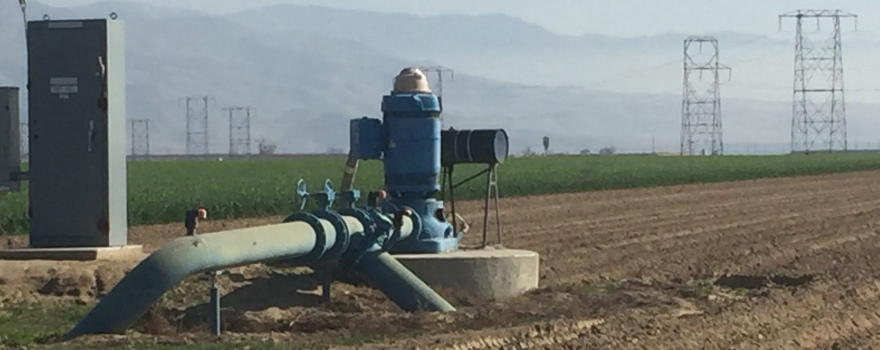“With the lack of rain this fall and winter, comes anxiety about California’s water future for people, wildlife, and agriculture in California’s Central Valley.
Our rainfall not only produces benefits at the surface like wildlife habitat and food crops, but it also recharges our stores of water below ground, otherwise known as groundwater aquifers. Even though we can’t see groundwater, and many of us don’t quite understand what it is, we all depend on it for the fresh water that we drink and use to grow our food.
California is facing one of the largest resource challenges ever: how to recharge or refill a depleted water table in the Central Valley, a hugely important region for wildlife and agriculture. … ”
Read more from Point Blue here: Attractive and beneficial: Groundwater recharge basins can be both for people and wildlife
For more on groundwater recharge, visit the groundwater recharge page at the Groundwater Exchange by clicking here.
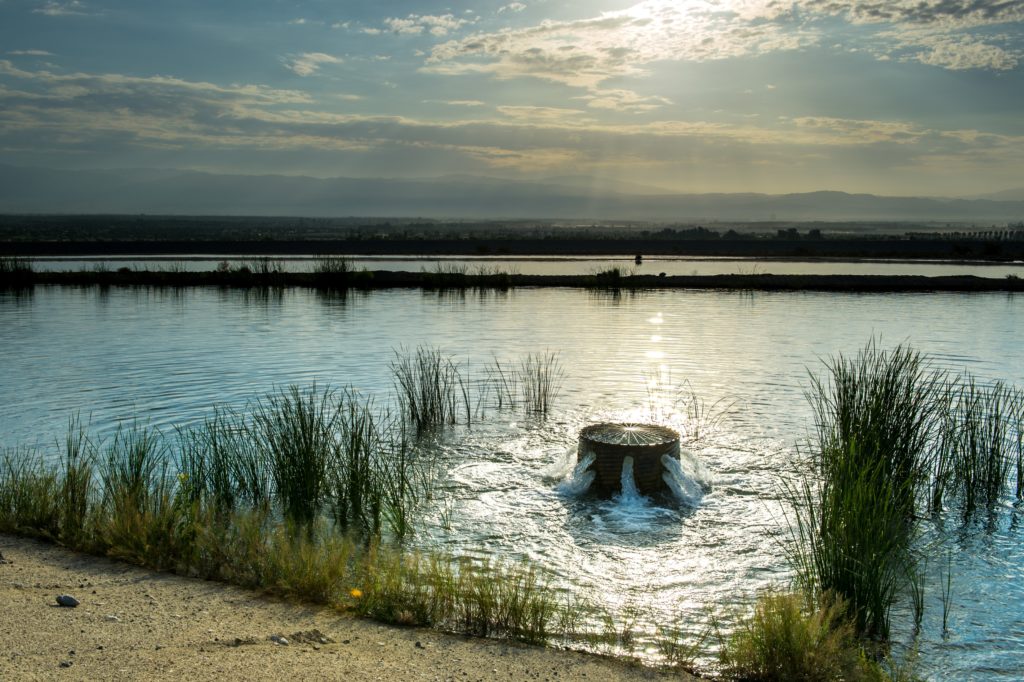
“Efforts to boost groundwater recharge are critical to making California’s limited, and increasingly volatile, water resources go further. Recharge is playing a growing role in maintaining groundwater as an effective drought reserve and in slowing or reversing the effects of years of unsustainable groundwater pumping.
But implementing recharge projects is not easy. Water managers face a range of hurdles. Even with the Sustainable Groundwater Management Act (SGMA) on the books, and the increasing availability of technical assistance, local decision makers are left mostly to their own ingenuity to figure out how to shore up groundwater resources to meet future needs.
Many Groundwater Sustainability Agencies (GSAs) expect recharge to help them meet their responsibilities under SGMA. But the details of how they will implement recharge projects are often unclear. … “
Click here to continue reading this article at Legal Planet.

“Groundwater recharge projects already play an important role in California. That role is about to expand rapidly, as local groundwater managers begin to take more concrete actions to meet their responsibilities under California’s landmark Sustainable Groundwater Management Act (SGMA).
As we mentioned in our last post, an important part of developing a successful recharge project is securing a source of water and the legal right to use it. In that post, we described the surface water right permit options administered by the State Water Resources Control Board (Water Board) that are potentially available for new groundwater recharge projects. We also mentioned the central role of permitting, and water rights oversight more broadly, in ensuring that water diversion and use doesn’t harm other water users or uses.
But is a water right always necessary? Below we explore when a recharge project might not need a water right at all (short answer: it’s complicated…and more than a little unclear)—and why it matters. … “
Click here to continue reading from Legal Planet.
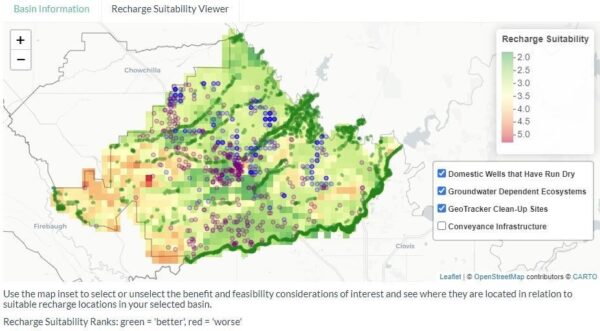 From the Environmental Defense Fund:
From the Environmental Defense Fund:
Recharging groundwater with rain and snowmelt is one strategy water managers are embracing to help balance groundwater supply and demand and comply with the California Sustainable Groundwater Management Act.
Depending on the location, recharge can also deliver other valuable benefits, such as additional habitat for wildlife and a more resilient water supply for people.
With support from EDF, four UC Santa Barbara graduate students have developed a new mapping tool for California’s Central Valley to identify the best locations for groundwater recharge to secure these bonus benefits.
Click here to continue reading at Growing Returns.
From the University of California Riverside:
Grasslands across the globe, which support the majority of the world’s grazing animals, have been transitioning to shrublands in a process that scientists call “woody plant encroachment.”
Managed grazing of drylands is the most extensive form of land use on the planet, which has led to widespread efforts to reverse this trend and restore grass cover due to the belief that it results in less water entering streams and groundwater aquifers.
A new study led by Adam Schreiner-McGraw, a postdoctoral hydrology researcher at the University of California, Riverside, modeled shrub encroachment on a sloping landscape and reached a startling conclusion: Shrub encroachment on slopes can increase the amount of water that goes into groundwater storage. The effect of shrubs is so powerful that it even counterbalances the lower annual rainfall amounts expected during climate change.
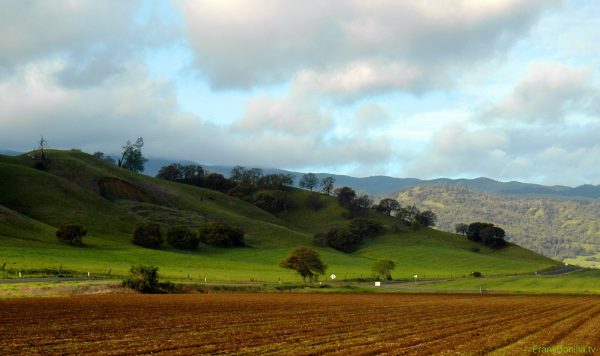 Kristin Sicke is the Assistant General Manager for Yolo County Flood Control and Water Conservation District, which manages water supplies for 200,000 acres in western Yolo County, which encompasses Woodland, Davis, and the surrounding area. The District manages a small hydroelectric plant, two reservoirs, more than a 150 miles of canals and laterals, and three dams including the world’s longest inflatable rubber dam. In this presentation from the 2019 Western Groundwater Congress, Ms. Sicke describes the District’s efforts to use winter stormwater flows for groundwater recharge in the Yolo subbasin.
Kristin Sicke is the Assistant General Manager for Yolo County Flood Control and Water Conservation District, which manages water supplies for 200,000 acres in western Yolo County, which encompasses Woodland, Davis, and the surrounding area. The District manages a small hydroelectric plant, two reservoirs, more than a 150 miles of canals and laterals, and three dams including the world’s longest inflatable rubber dam. In this presentation from the 2019 Western Groundwater Congress, Ms. Sicke describes the District’s efforts to use winter stormwater flows for groundwater recharge in the Yolo subbasin.
Click here to read this article.
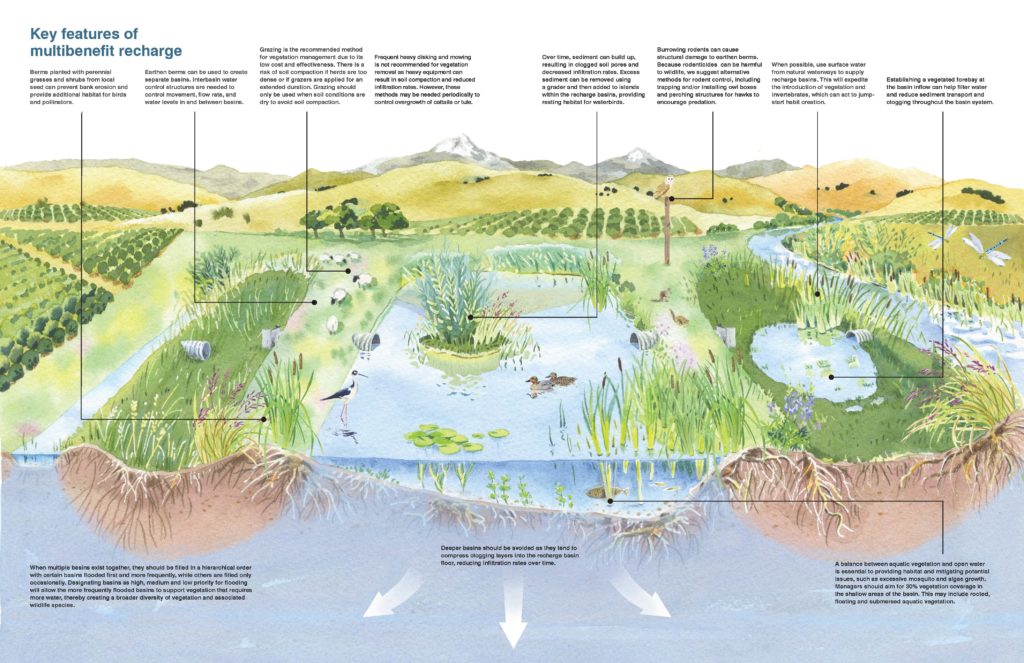 Anna Schiller writes,
Anna Schiller writes,
“I wasn’t expecting to see egrets, herons and pelicans on my first trip to the San Joaquin Valley — a region in the southern part of California’s Central Valley known for its impressive agricultural production and scorching summer heat. I didn’t find these birds at one of the valley’s few wildlife refuges, but at a groundwater recharge facility designed to spread and infiltrate surface water into the ground below.
Recharge basins are becoming increasingly popular in overdrafted regions in California, where water managers are seeking solutions to balance groundwater supply and demand to comply with the state’s Sustainable Groundwater Management Act (SGMA). … ”
Continue reading at the Environmental Defense Fund’s Growing Returns blog.
Ellen Bruno, University of California Berkeley; Andrew Ayres, Public Policy Institute of California; and Emmanuel Asinas, California Department of Water Resources.
Groundwater is a critical source of freshwater. As of 2015, groundwater contributed almost 40% of the public water supply in the U.S.1 Many groundwater basins, however, have suffered from declining groundwater stocks due to sustained over pumping, leading to higher pumping costs, land subsidence, and other negative consequences.
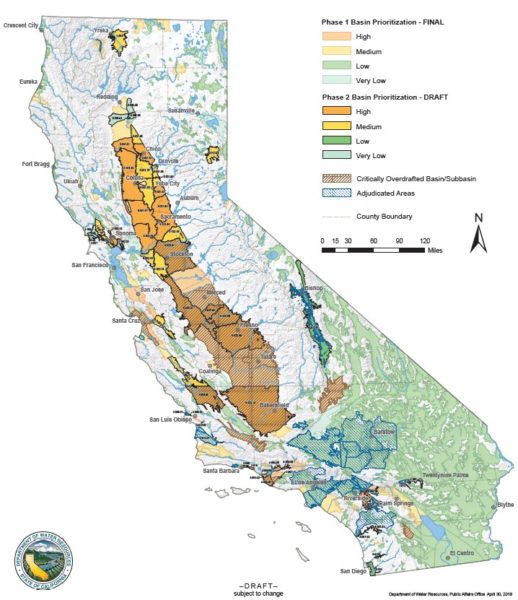 California’s Central Valley overlays one such declining aquifer system. Amid an extreme drought, the state passed a law in 2014, the Sustainable Groundwater Management Act (SGMA). The legislation requires local public agencies to address groundwater overdraft and its negative consequences by 2040.
California’s Central Valley overlays one such declining aquifer system. Amid an extreme drought, the state passed a law in 2014, the Sustainable Groundwater Management Act (SGMA). The legislation requires local public agencies to address groundwater overdraft and its negative consequences by 2040.
As shown in Figure 1, SGMA applies to over 100 basins that, in total, account for over 90% of the state’s groundwater pumping.2 To meet their goals, groundwater agencies may either require or incentivize users to pump less (demand-side approach), find additional water to recharge the groundwater (supply-side approach), or undertake some combination of both.
This article discusses one supply-side approach: using flood water for managed aquifer recharge (flood-MAR). First, we discuss the availability of flood water for managed aquifer recharge in California. Then, we showcase how an auction mechanism for this scarce resource could promote its efficient and equitable allocation.
Click here to read this article at the Global Water Forum.







